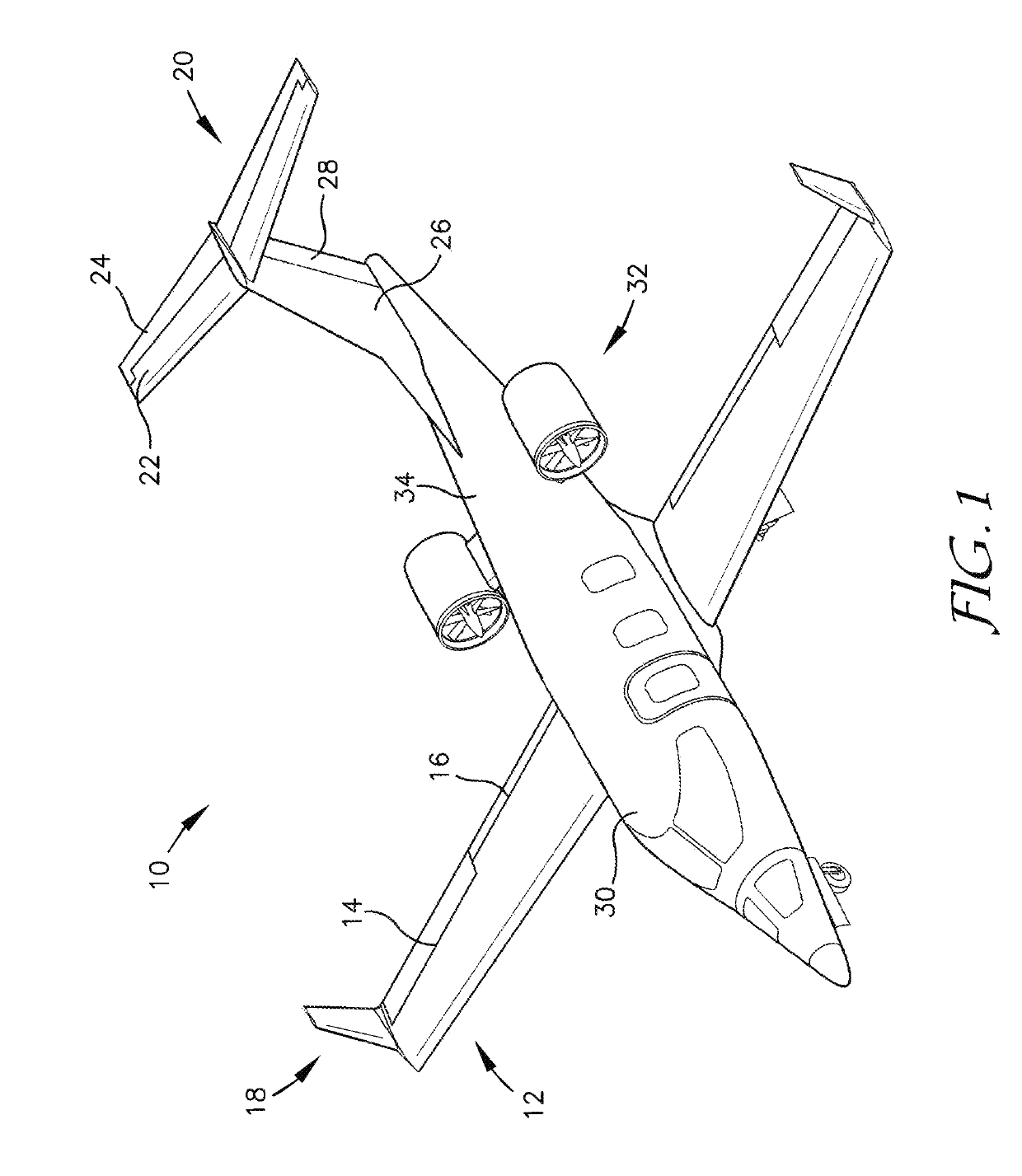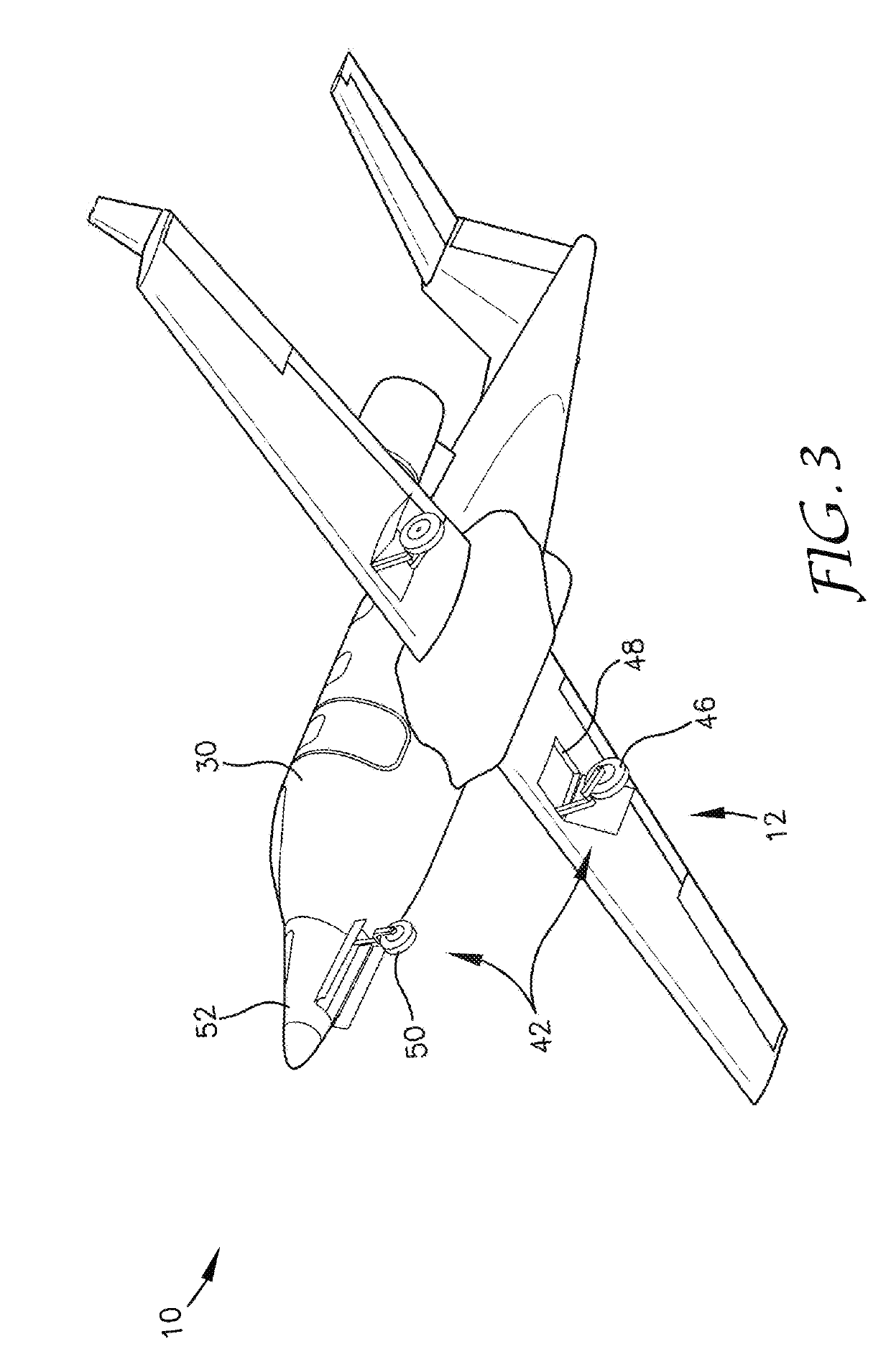Efficient low-noise aircraft propulsion system
a propulsion system and low noise technology, applied in the direction of machines/engines, mechanical equipment, transportation and packaging, etc., can solve the problems of inefficient aircraft, general aviation aircraft are typically noisy and inefficient, and the propeller type general aviation aircraft are relatively inexpensive but noisy, and the exposed propellers are noisy, so as to achieve low noise
- Summary
- Abstract
- Description
- Claims
- Application Information
AI Technical Summary
Benefits of technology
Problems solved by technology
Method used
Image
Examples
Embodiment Construction
[0031]Configurations and components of the aircraft presented may be broken into categories for simplicity. A general overview of the main features and expectations of the aircraft are presented first, followed by exemplary embodiments of configurations of the aircraft. A more detailed description of the interior / exterior propulsion system is given next that focuses on the components of the propulsion system housed within the fuselage then components of the propulsion system housed on the exterior of the fuselage. An exemplary flight plan following an embodiment of the aircraft through an exemplary flight is presented and followed by alternative embodiments of configurations and operations of the aircraft. The following description of embodiments of the aircraft are exemplary and any components or features in embodiments of the aircraft may be combined, omitted, or added.
General
[0032]The following detailed description of embodiments of the invention references the accompanying drawi...
PUM
 Login to View More
Login to View More Abstract
Description
Claims
Application Information
 Login to View More
Login to View More - R&D
- Intellectual Property
- Life Sciences
- Materials
- Tech Scout
- Unparalleled Data Quality
- Higher Quality Content
- 60% Fewer Hallucinations
Browse by: Latest US Patents, China's latest patents, Technical Efficacy Thesaurus, Application Domain, Technology Topic, Popular Technical Reports.
© 2025 PatSnap. All rights reserved.Legal|Privacy policy|Modern Slavery Act Transparency Statement|Sitemap|About US| Contact US: help@patsnap.com



